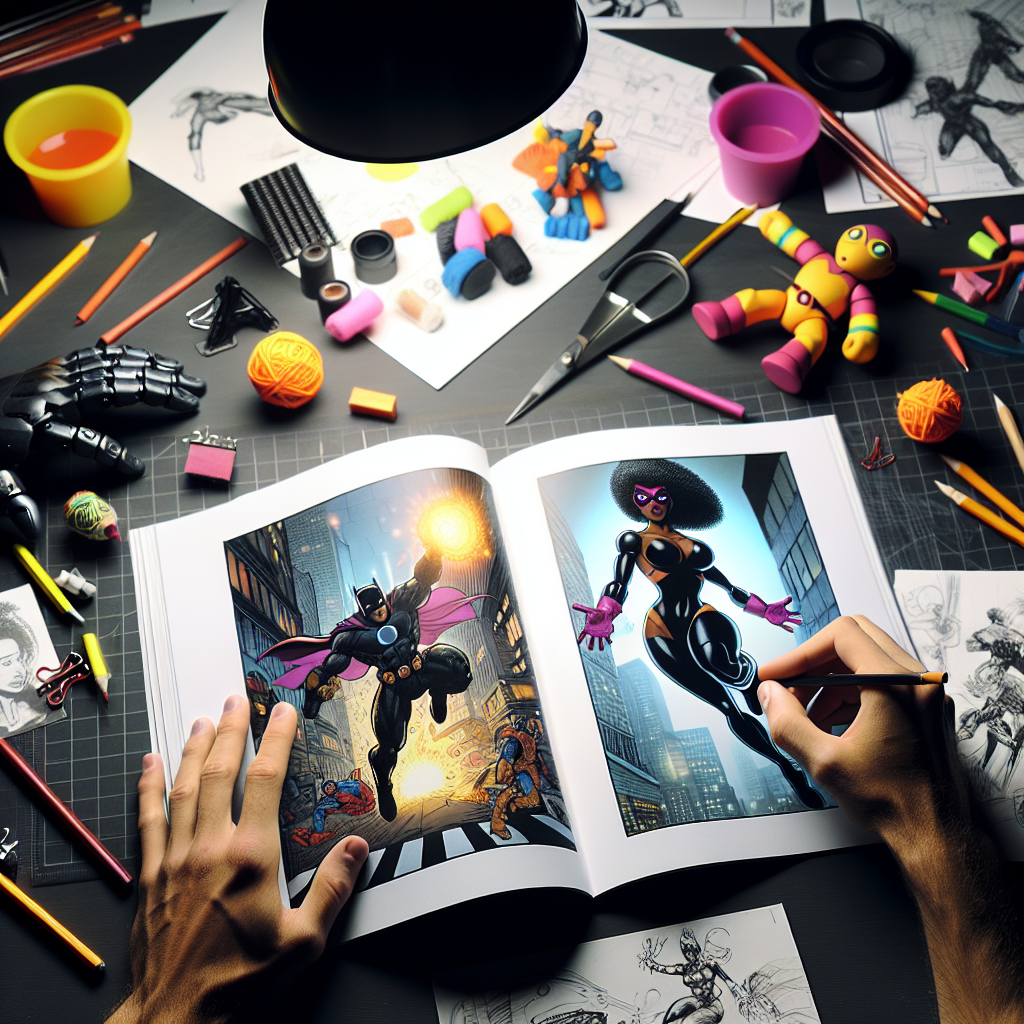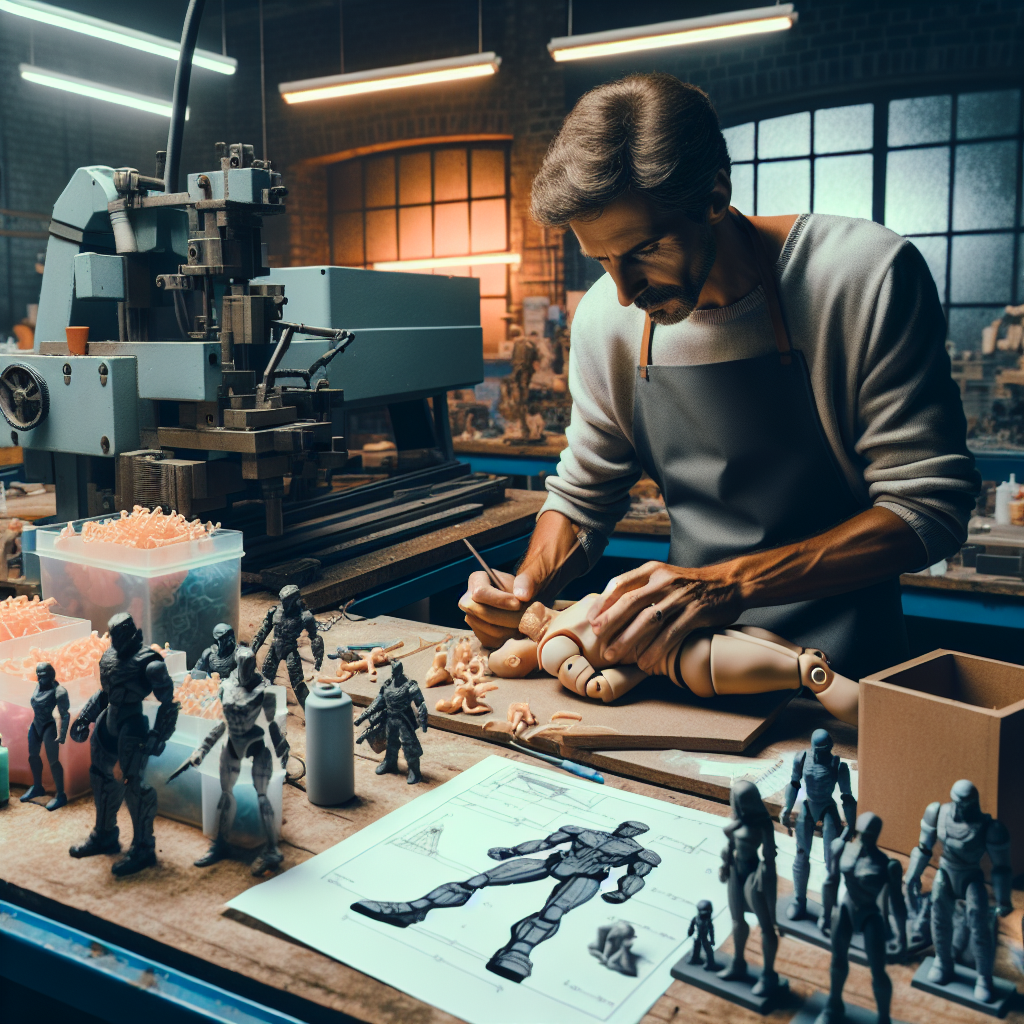The Relationship Between Comic Books and Action Figure Design Choices
Comic books have been a major part of popular culture for decades, providing a source of inspiration for numerous forms of media. One of the most significant connections is the relationship between comic books and action figure design choices. This connection hinges on several factors, including comic accuracy, character interpretation, and adherence to source material. In this blog post, we will explore how these elements work together to create the action figures that fans know and love.
Understanding Comic Accuracy
When collectors and enthusiasts talk about comic accuracy in action figures, they refer to how closely the design choices reflect the characters as portrayed in their respective comic series. Action figures often serve as a tangible representation of beloved characters, making comic accuracy a crucial aspect of value and desirability.
- Visual Details: Elements such as color schemes, costume designs, and body proportions are oftentimes meticulously crafted to align with their comic book counterparts.
- Accessories and Props: Including signature weapons, vehicles, or other thematic elements can enhance the figure’s authenticity and connection to the comic book universe.
By ensuring that these details mirror the comic book art, toy manufacturers can create a sense of nostalgia and authenticity that appeals to both new and veteran fans alike.
Design Choices: Balancing Artistry and Functionality
Design choices play a vital role in the creation of action figures, influencing how well these products resonate with consumers. Toy designers must strike a balance between artistic expression and gameplay functionality. This means that while comic accuracy is essential, it is also important to consider the following:
- Playability: Action figures are meant to be interactive. Designers often include movable joints, accessories, and features that enhance the overall user experience, even if that means deviating from the source material.
- Market Trends: Trends in the toy industry can dictate certain design choices, pushing manufacturers to adapt the aesthetics of their figures to fit consumer preferences while still maintaining a connection to the original comics.
The result is a wide range of designs that can be true to the comic or feature slight modifications to make them more appealing or functional as toys.
Character Interpretation Through Design
Each artist’s interpretation of a comic book character can vary significantly, leading to a multitude of design choices that reflect different eras, styles, and story arcs. This phenomenon is often evident when a character undergoes a redesign for various comic runs, animated series, or film adaptations. These changes influence how action figures are created, with designers drawing on the most recent iterations of the character for inspiration.
- Artistic Style: Depending on the artistic direction of a particular comic series, the design of an action figure can change dramatically. For example, a character that appears in a gritty noir comic might be designed with a darker color palette and more angular features than in a more colorful, cartoonish comic book.
- New Abilities and Costumes: As characters evolve and develop new powers or costumes, action figures can be released to reflect these changes, offering collectors the chance to own a piece of evolving lore.
This natural evolution can lead to the creation of figures that are comic accurate, while still presenting a fresh take on beloved characters. Such design choices allow the figures to resonate with various incarnations of the character enjoyed by fans.
Adhering to Source Material: A Double-Edged Sword
While comic accuracy is paramount, adhering strictly to source material poses challenges for action figure designers. The task of interpreting source material involves understanding the essence of a character while making necessary adjustments for a three-dimensional form. Key considerations include:
- Scale and Proportion: Comic artists often exaggerate certain aspects of characters for dramatic effect. Translating these designs into action figures requires designers to adapt proportions to ensure balance and functionality.
- Material Limitations: Different materials may restrict the level of detail and articulation achievable in action figures, leading to compromises in design that may affect comic accuracy.
These challenges highlight the complexity of translating a two-dimensional graphic representation into a three-dimensional collectible. As technology advances, the hope is that manufacturers will find ways to bridge these gaps even better while honoring the source material.
Creating Iconic Action Figures
Ultimately, the relationship between comic books and action figure design is a fascinating interplay of art, business, and fandom. By understanding comic accuracy, design choices, character interpretation, and source material, designers can create figures that resonate deeply with fans and collectors alike.
As we look to the future of action figure design, it is essential to acknowledge that while comic accuracy is a fundamental principle, the evolution of characters and formats will continue to influence the design landscape. By finding ways to enhance playability while retaining the essence of the characters, we can expect to see more innovative designs that celebrate the rich history of comic books.
Conclusion
The link between comic books and action figure design captures the essence of storytelling through visual representation. As long as comic books continue to inspire us, the action figures that emerge from them will reflect the creativity and artistry of the source material, bringing beloved characters to life in ways that inspire new generations to explore the worlds they inhabit.
In the realm of collectibles, a great action figure transcends mere plastic; it becomes a symbol of connection to a larger narrative, making comic accuracy and thoughtful design choices more important than ever.




